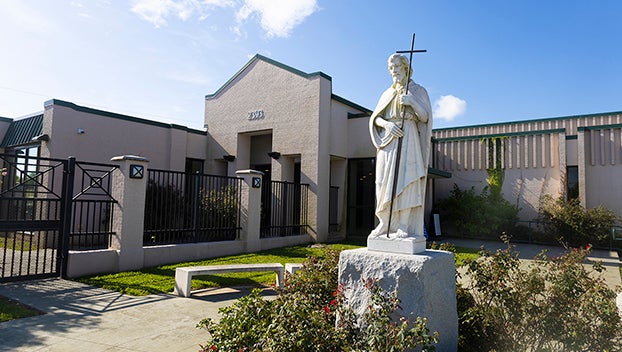Despite warnings, citizens still ignoring railroad laws
Published 12:00 am Saturday, July 31, 1999
ERIK SANZENBACH / L’Observateur / July 31, 1999
LAPLACE – Riding in the cab of a locomotive, one gets a true feeling of the power in a train. Sitting on top of a 2,500 horsepower diesel engine, arider looks down on the cars on the road and can’t help but wonder why an automobile would even attempt to race a train to an intersection.
But they do, and as Betsy Williams, Louisiana state coordinator for Operation Lifesaver, and two deputies from the St. John Sheriff’s Officetalked about railroad safety, three cars zoomed across the intersection at Elm Street, ignoring the locomotive’s loud whistle, the flashing lights, lowering gates and the fact that the train was bearing down on the intersection at 30 mph.
Williams shook her head and sighed. The cars made it through theintersection safely, not realizing how lucky they were.
Since January, 49 people have died in collisions with trains in Louisiana.
In 1998, train-car collisions increased by 5 percent in Louisiana. St. Johnthe Baptist Parish is eighth in the state for train and car collisions at highway-rail grade crossings with eight so far this year, including one fatality.
These statistics have prompted Williams to begin an aggressive safety campaign called Operation Lifesaver in the parish. It is sponsored by theLouisiana Highway Safety Commission and the railroads that operate within the state and parish.
The program also includes classes for the local law enforcement bureaus in the River Parishes and Jefferson Parish called Grade Crossing Collision Investigation. The idea is to educate law officers about safety at railroadintersections, and also how to handle accidents and derailments when they happen in their respective jurisdictions. Operation Lifesaver is hopingthat this education will be passed along to local citizens and drivers.
“Basically, the police and the railroads are helping each other,” said Phil Foser of the Burlington Northern Santa Fe railroad. “Hopefully, thistraining will change the attitude of the public.”Operation Lifesaver, a national program started in 1972, has worked very well so far in educating people.
Robert Ivey, an eight-year veteran of Operation Lifesaver and an employee of Burlington North Santa Fe railroad said, “In 1972 we started out the program with 12,000 collisions nationally. In 1998 we were down to3,000. Despite more trains, and more automobiles, in 26 years, we havemade a difference.”Seventy-two percent of collisions between trains and cars occurred when the car was moving over a crossing; 18 percent of the cars hit were stopped on the tracks.
“There’s no such thing as an accident at a railroad crossing,” said Ivey, “There are collisions, hits, fatalities and injuries, but we never call them accidents.””Yeah,” agreed Allen Pepper of the Kansas City Southern railroad, “and there is no such thing as a near-miss. They are always near hits.”This attitude is fostered by the ignorance of drivers about the rules regarding trains and railroad crossing.
First of all, drivers have to realize that it is illegal to stop on railroad tracks for any reason.
Secondly, as Williams explained, “People don’t realize that the white X’s with ‘railroad crossing’ on them are really yield signs. All drivers arelegally required to yield to all trains. Unfortunately, people don’t.”Statistics bear this out. Eighty-two percent of all train-car collisionsoccur at crossings that only have the ‘crossbuck’ signs.” She went on, “Yield also means that every driver should always expect a train, so look and listen when approaching a railroad crossing. Of courseyou have to stop at all flashing lights and when the gates are down.”People also like to think they can out run a train. Usually, they are wrong.Trains are a lot bigger and a lot faster than drivers realize. Trains requirea lot more room to stop. It takes a 150-car freight train traveling at 30mph almost two-thirds of a mile to come to a complete stop.
Williams warned, “People don’t realize the weight ratio between a train and a car.” As an example she said, “Think of a train-car collision as thesame thing as a regular car running over an aluminum soft drink can.”Despite the statistics, Tom Drake, safety inspector for the Federal Railroad Agency, said that Louisiana is doing pretty good.
“Louisiana has a good history of safe railroads,” he said. “There is a goodattitude about safety in Louisiana.”Drake said there is room for improvement. He said there are way too manyrailroad crossings in the state.
“Eliminating as many crossings as you can would be your best bet,” Drake said.
This would accomplish two things. First, there would be less crossings forcollisions to occur, and the railroads, parishes and state would save money. The lights and gates at one crossing cost on the average of$100,000 to $200,000. Eliminating some of these crossings would mean agreat savings all around.
However, all agreed that eliminating crossings is not politically expedient right now.
“The best thing, ” said Pepper, “is for police to issue more citations at railroad crossings and educate the public.”Williams said with a smile, “Police departments could fund themselves for a year just on the tickets they wrote at railroad crossings.”
Return To News Stories





